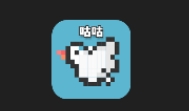最新下载
热门教程
- 1
- 2
- 3
- 4
- 5
- 6
- 7
- 8
- 9
- 10
在VB组件中使用串缓冲 - 2
时间:2022-06-30 11:12:18 编辑:袖梨 来源:一聚教程网
Lesson 2 : The VB Component
--------------------------------------------------------------------------------
How2Project4.vbp
The DoBuffer() Method
The DoBuffer() method will be sent a string buffer (strBuffer), the value of the length of the string data
already placed within the buffer (lngBuffer), and the string to add to the buffer (AddString). These
arguments will be declared and sent from our MethodName() method, which will be covered later in this
article.
Private Sub DoBuffer(ByRef strBuffer As String, ByRef lngBuffer As Long, ByVal AddString As String)
Notice that the DoBuffer() method is declared as a subroutine rather than a function. This is because it
doesn"t really return any data from the method itself. Rather, it manipulates the data sent by reference
from the calling method.
Two local variables need to be declared for internal use.
Dim strHold As String
Dim lngIndex As Long
Now our first line of business will be to determine whether our buffer is large enough to hold the string
data we want to add to it. But before we do this, we want to check out whether our calling method sent a
NULL string or not.
If Not Trim$(AddString) = "" Then
If the calling method sends a NULL string, we"ll quietly skip the concatenating process and avoid the
whole affair via this If-Then statement. On the other hand, if the sent string holds characters, we"ll
need to check that the buffer is large enough to hold them. To do this the current length of the data in
the buffer is added to the length of the sent string and then the resulting sum is compared to the length
of the overall buffer size.
If lngBuffer + Len(AddString) > Len(strBuffer) Then
If the buffer is large enough to fit the sent string, then the code discussed next will be skipped. This
will occur more often than not since we"ll set our string buffer to hold a large amount of data when we
--------------------------------------------------------------------------------
How2Project4.vbp
The DoBuffer() Method
The DoBuffer() method will be sent a string buffer (strBuffer), the value of the length of the string data
already placed within the buffer (lngBuffer), and the string to add to the buffer (AddString). These
arguments will be declared and sent from our MethodName() method, which will be covered later in this
article.
Private Sub DoBuffer(ByRef strBuffer As String, ByRef lngBuffer As Long, ByVal AddString As String)
Notice that the DoBuffer() method is declared as a subroutine rather than a function. This is because it
doesn"t really return any data from the method itself. Rather, it manipulates the data sent by reference
from the calling method.
Two local variables need to be declared for internal use.
Dim strHold As String
Dim lngIndex As Long
Now our first line of business will be to determine whether our buffer is large enough to hold the string
data we want to add to it. But before we do this, we want to check out whether our calling method sent a
NULL string or not.
If Not Trim$(AddString) = "" Then
If the calling method sends a NULL string, we"ll quietly skip the concatenating process and avoid the
whole affair via this If-Then statement. On the other hand, if the sent string holds characters, we"ll
need to check that the buffer is large enough to hold them. To do this the current length of the data in
the buffer is added to the length of the sent string and then the resulting sum is compared to the length
of the overall buffer size.
If lngBuffer + Len(AddString) > Len(strBuffer) Then
If the buffer is large enough to fit the sent string, then the code discussed next will be skipped. This
will occur more often than not since we"ll set our string buffer to hold a large amount of data when we
相关文章
- 魔兽世界怀旧服Plus战歌峡谷声望速刷攻略 12-16
- 番茄小说免费版畅读入口-番茄小说免费版极速轻量阅读入口 12-16
- 魔兽世界怀旧服Plus银翼要塞声望速刷攻略 12-16
- windows10免费激活密钥大全-windows10激活密钥哪里找 12-16
- 魔兽世界怀旧服Plus部落战旗位置一览 12-16
- 歪歪漫画免费在线看漫画高清入口-歪歪漫画免费页面画质超清优选 12-16














